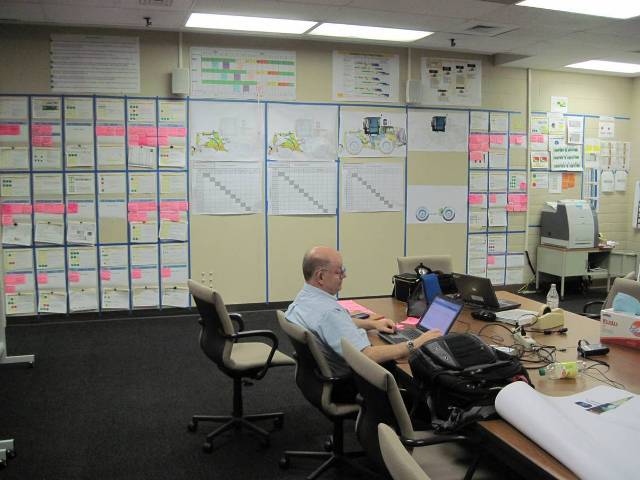We often associate lean development with going faster and being more efficient based on standardized processes with frequent checkpoints. Many speak of a development factory where there is flow and a rhythm to the development cycle. This picture becomes naturally associated with boring, routine products. But this is only part of the story.
Like lean in any process, lean development should follow the Plan-Do-Check-Act (PDCA) cycle. The “plan stage” is arguably the most important, beginning with taking the time to develop a vision for the product that will satisfy customers. A lean principle is go to the gemba and the customer requirements stage should include going and seeing real customers using past generation products, competitive products, and asking them questions. Toyota chief engineers have been known to live with wealthy families in Beverly Hills to define Lexus requirements, personally drive a Sienna minivan in every part of North America, and hang out where young people hang out to develop a concept for Scion.
Another critical part of the P stage is broadly considering alternatives, called set-based design in lean development. The chief engineer of the first Prius, Mr. Uchiyamada, under intense time pressure from Toyota’s President, insisted that his engine engineers explore every possible hybrid technology in the world before narrowing it down successfully to smaller numbers of options and finally one. He held competitions to pick the best transmission technology and select the best styling option from four different design studios. This is pure creativity.

(An obeya)
Of course when the concept has been thoroughly explored and a design settled on there is an execution mode which is quite regimented. Weekly cross-functional meetings are held in a room populated with visuals on the wall (an obeya or big room) with each function reporting on timing, quality, cost, and functionality. Breaking the process into small pieces that are monitored by the week, and in some cases by the month, leads to a continuous flow of progressive design, rather then the usual peaks and valleys of effort. There are also design standards that constrain the design. Yet timing and design constraints may actually encourage creativity. Under time pressure, with aggressive targets, and clear constraints, engineers must be innovative to succeed.
Few innovations are the result of one big idea of a genius. Generally, teams of people work toward a vision with fits and starts, small wins and occasional big wins, and at the end the product is a major advance. Yet it is hard to point to one single idea that created the advance. It is the result of teams of people going through endless PDCA loops generating ideas, testing them, learning something, and starting the process all over.
At a more macro level Toyota views each new car as its own PDCA loop leading to learning and improvements in the next generation. It appeared that the Prius just snuck up on the world and suddenly became the world’s leading alternative fuel vehicle—by a huge margin. In reality it started as a vision—a car for the 21st century. Each generation built on the last, while Toyota was developing know-how, internally, in critical technologies that would be needed for any alternative fuel vehicle such as high performance batteries, engine optimization software, AC-DC switching circuits, electric motors, and new types of transmissions. The knowledge lead generated by these repeated learning cycles are hard for a competitor to replicate when they started out almost a decade behind.
When lean engineering is only the application of tools, like visual management, detailed gate reviews, and control of queues it may in fact reduce innovation. When it is developing people who can creatively reach toward an aspirational vision, within clearly defined constraints, it is the definition of innovation.
Dr. Jeffrey Liker is professor of industrial and operations engineering at the University of Michigan and author of The Toyota Way. He leads Liker Lean Advisors, LLC and his latest book (with Gary Convis) is The Toyota Way to Lean Leadership.
